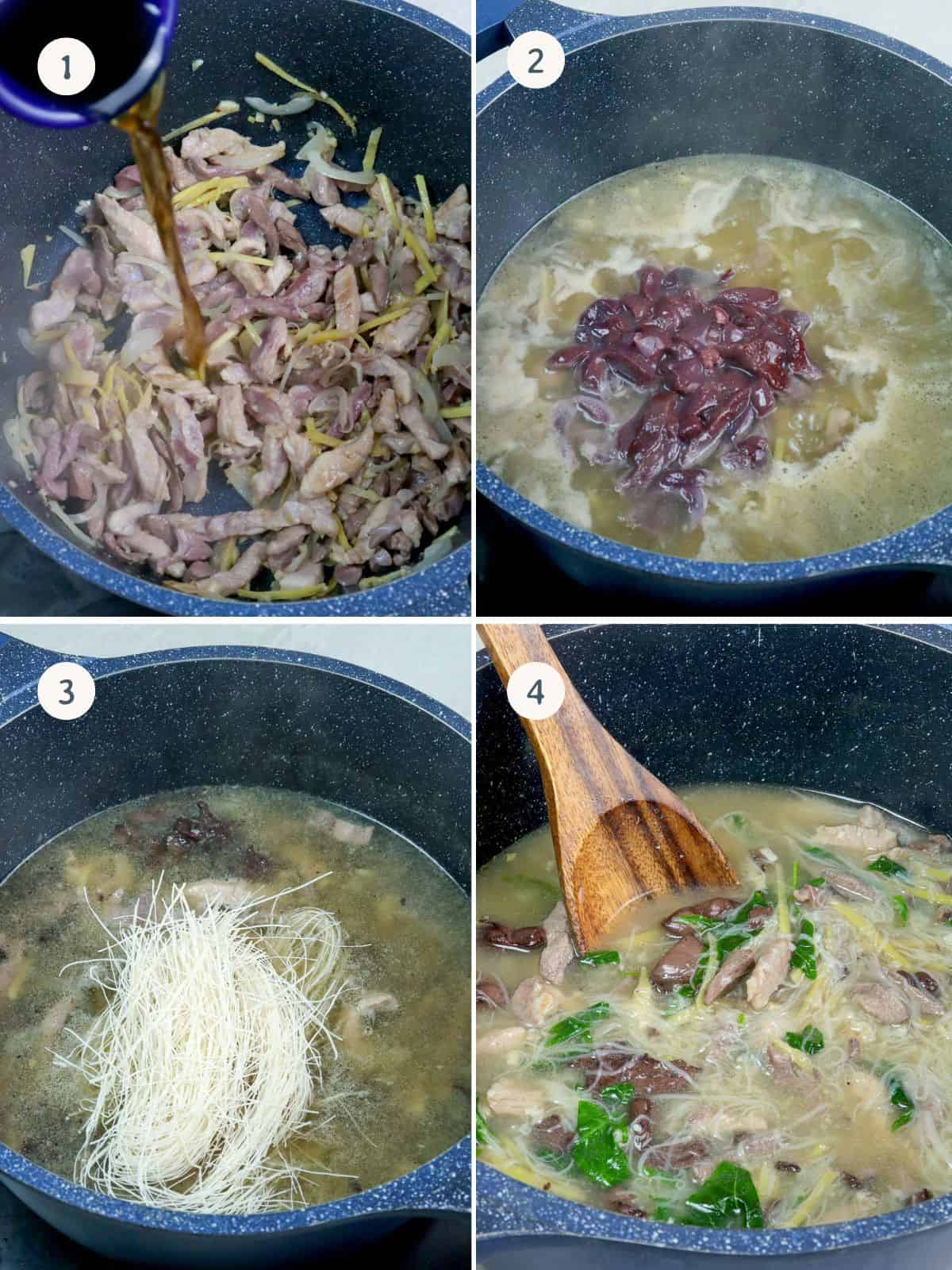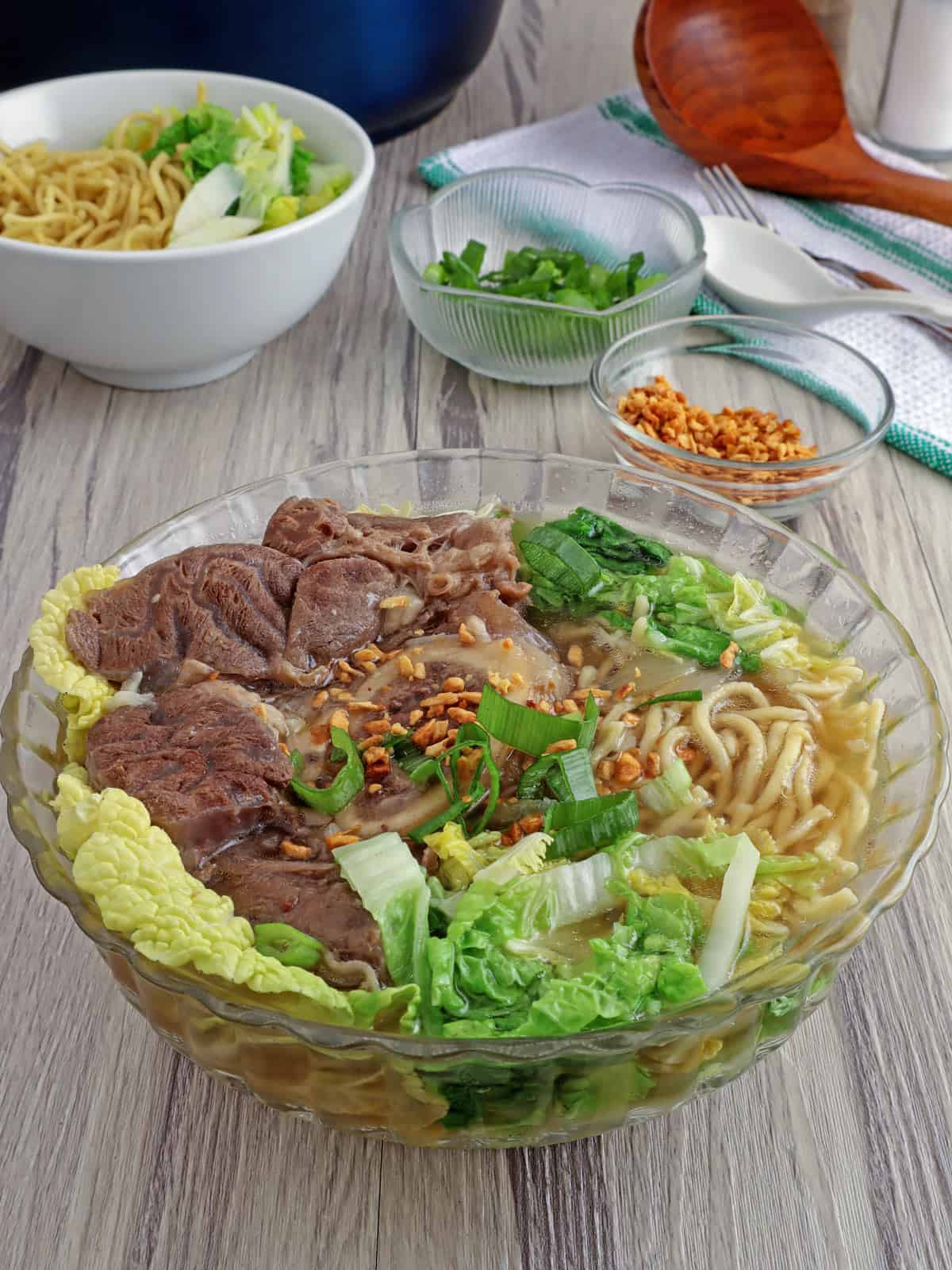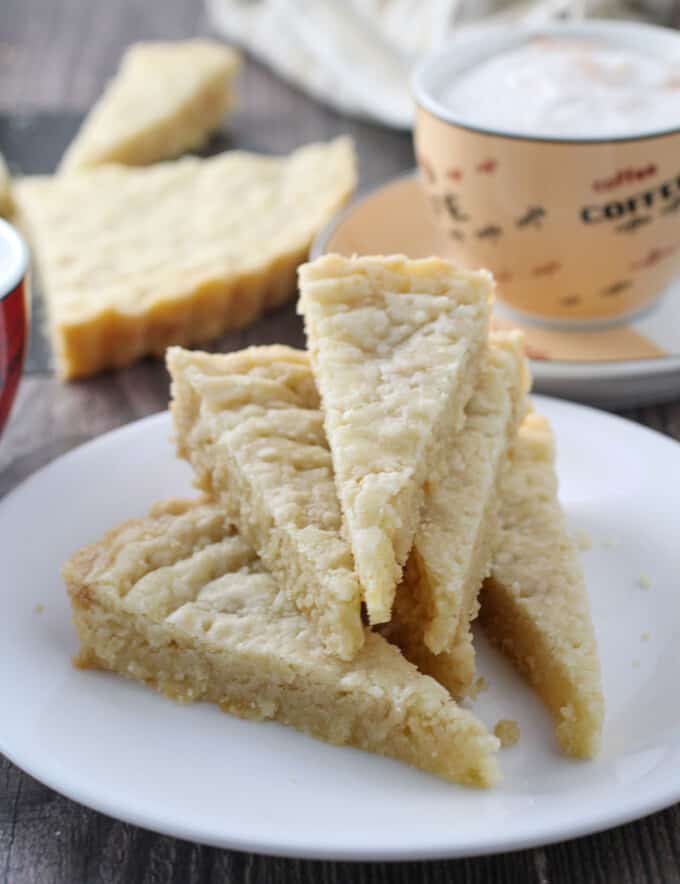Batchoy Tagalog is a hearty soup made with pork, offal, and miswa in a ginger-flavored broth. It's ready in under an hour and is the perfect comfort food for cold, rainy days!

It's been a rainy week in our neck of the woods, so our meals at home have been mostly soups and stews. But while G enjoyed bowls of turkey chili and split pea soup, I, on the other hand, had bowlfuls of bulalo and this batchoy Tagalog to keep me warm.
Ingredient notes

Batchoy Tagalog is a popular soup in Northern Luzon, made from pork and various organ meats, including liver and heart. The use of ginger and chili leaves brings a similar taste to tinolang manok, but the addition of pork blood and miswa noodles gives the dish a distinct flavor.
- Pork - I prefer to use lean pork tenderloin or lomo, but you can also use pork belly (liempo) or shoulder (kasim) for a fattier cut.
- Pork heart- you can also use the pancreas or lapay
- Fresh chili leaves- if unavailable, you can substitute spinach or chopped kinchay (Chinese celery)
Batchoy Tagalog Cooking Steps

- Brown - sauté the onions, garlic, and ginger until softened and aromatic. Add the pork tenderloin and heart and cook until lightly browned. Season with fish sauce and continue to cook for 1 to 2 minutes.
- Cook- add water and simmer until the meat is tender. Increase the heat to high and bring the broth to a boil. Add the liver and let it cook for a few minutes before stirring, so it won't cloud the soup. Add the pork blood and cook for a few minutes, then stir to allow it to set.
- Add miswa and cook for 1 to 2 minutes or until softened.
- Add spinach leaves and push them down into the broth. Turn off the heat and cover to allow the residual heat to cook the spinach.
Cooking tips
- The recipe calls for coagulated blood. Cut it into pieces and bring the broth to a rolling boil before adding. Do not stir for a few minutes to allow it to set.
- Another alternative method is to cook the blood separately before adding it to the soup. In a sauce pot, combine pork blood and enough water to cover. Bring to a boil for about 2 to 3 minutes or until firm. Drain well and cut into cubes. Add to the soup during the last 10 minutes of cook time.
Frequently Asked Questions
Where does the word batchoy come from?
Batchoy, also known as batsoy, originates from the Chinese word bah-chhùi, meaning "minced meat" or "pieces of meat."
What is the difference between La Paz batchoy and Batchoy Tagalog?
Although both share the same name and use pork and organ meats as ingredients, Batchoy Tagalog from Northern Luzon is distinct from Iloilo's La Paz Batchoy. While the latter is a hearty noodle soup with thick fresh noodles and toppings of crushed chicharon, fried garlic bits, and raw egg, Batchoy Tagalog is closer in taste to tinola due to its use of ginger and chili leaves. The dish also includes miswa noodles and pork blood.

Serving suggestions
Serve this pork soup as a main dish with steamed rice for lunch or dinner. It's a hearty, flavorful dish that's sure to take the chill off cold, rainy days.
Storage and reheating instructions
- Fridge- Transfer leftovers to an airtight container and refrigerate for up to 3 days. Reheat in a saucepan over medium heat to 165°F (74 °C). Add water or broth as needed to loosen the consistency.
- Freezer- Noodles tend to absorb a lot of liquid and turn mushy when frozen and reheated. If planning to freeze the soup for more extended storage, skip the miswa and add it when reheating.
Ingredients
- 1 tablespoon oil
- 1 onion peeled and sliced thinly
- 4 cloves garlic peeled and minced
- 2 thumb-sized ginger peeled and minced
- ½ pound pork tenderloin cut into strips
- ¼ pound pork heart about 1 piece, cut into thin strips
- 2 tablespoons fish sauce
- 6 cups water
- ¼ pound pork liver cut into thin strips
- ¼ pound coagulated blood drained and cut into cubes
- salt and pepper to taste
- 2 ounces miswa
- 1 bunch fresh chili leaves stems trimmed
Instructions
- In a large pot over medium heat, heat oil. Add onions, garlic, and ginger, and cook until softened.
- Add pork and heart. Cook, stirring occasionally, until lightly browned.
- Add fish sauce and cook for about 2 to 3 minutes.
- Add water and bring to a boil, skimming scum that floats on top.
- Lower heat, cover, and continue to cook for about 15 to 20 minutes or until meat is tender.
- Increase heat to high and bring the broth to a rolling boil.
- Add pork liver and cook, without stirring, for about 2 to 3 minutes. Stir and continue to cook for another 2 to 3 minutes.
- Add coagulated blood and cook, without stirring, for about 2 to 3 minutes. Stir and continue to cook for about 8 to 10 minutes.
- Season with salt and pepper to taste.
- Add miswa and continue to cook for 1 to 2 minutes.
- Add chili leaves, pressing down into the broth. Turn off the heat and cover to allow residual steam to cook leaves. Serve hot.
Notes
- The recipe calls for coagulated blood. Cut it into pieces and bring the broth to a rolling boil before adding. Do not stir for a few minutes to allow it to set.
- Another alternative method is to cook the blood separately before adding it to the soup. In a sauce pot, combine pork blood and enough water to cover. Bring to a boil for about 2 to 3 minutes or until firm. Drain well and cut into cubes. Add to the soup during the last 10 minutes of cook time.
Nutrition Information
“This website provides approximate nutrition information for convenience and as a courtesy only. Nutrition data is gathered primarily from the USDA Food Composition Database, whenever available, or otherwise other online calculators.”








Mia says
This is the recipe I am looking for. Its starting to get cold here in the North and thought of this soup that I have enjoyed back in the Philippines. So I searched in the net and found this closed to my Mom's. Thanks for sharing.
A.San Luis says
At last I found the recipe my dad use to make every time we butchered pigs for big events such as Fiestas and weddings back in Guam. Aside from the ingredients above he also added small portions of kidney, the spleen and lungs during the sauté process of the heart and tenderlion. I don't remember it having misuwa but I know having the conjugated blood and the sili leaves is a must. Thanks so much for the recipe. And for that guys comment above the most loved foods from any country originated from the poverty-stricken communities.
Teofila Lacaba says
This is healthy recipe and affordable.My mother cooked it for us,enough for big family
Imeeh Apple says
I've tried this recipe, everyone loves it. Except that I did not put blood. 🥰🥰🥰 thank you.
Mary Joy Rosario says
thanks for the detailed recipe...
and
by the way how to cook Bopis?and dinuguan?
Jean estaron says
Yummy I try it
Lala says
very easy to follow instructions
sirpo2011 says
What you have posted is a squatter recipe
Care to guess how many squatters have internet access
Get back to me when no blood is involved
Lalaine Manalo says
What is squatter here is your character, or lack of.
Pat A Cablao says
Good for how many persons yung recipe presented?
Lee says
would've been better if u guys include the nutrition facts alongside the recipe
Gigi says
Squatter recipe? never heard of such thing. Blood is used in other culture, the Irish use it in their black pudding. Many Asian cultures use it, and squatter means poor? Being poor is not a crime, you find them more generous than those who think they are “rich”, & truly rich people i find with humility and kindness. You certainly lack the tact, culture and wisdom to label it as squatter recipe.
Extraordinaire says
The nerve of this guy to say squatter dish to think pigs blood have been a part of chinese and south east asian cuisine for ages. You mocking a culture. It is you a filthy swine squatter here.
Aeeray says
A squatter recipe? Clearly, you're uncultured. Let me guess, you immigrated to the Philippines and all of a sudden you're king of the world with your dollar exchange rate. A quick google will show you many recipes from different countries use blood as an ingredient. What, no internet?
The sense of entitlement of this guy, you should go back to where you came from where there's no "squatter recipe". Or, do us a favor and shut your mouth if you can't appreciate, or at the very least, be a decent human being in this board that you visit for free. Idiot.
Caloy Paradero says
its perfect!!
Jeffrey Grae says
Thank You.. ❤
Gizelle says
Hello po! Pano po if frozen na ung blood? Do I still need to boil it pa? Thanks po in advance!
Aki says
Thank you! We enjoy our lunch! Early lunch 😊
Lalaine Manalo says
Hi Aki! I'm glad you enjoyed it.
Amelia says
Nice to see and add other recipe for my menu like me i love cooking
Lalaine says
Enjoy! 🙂
girlie reguindin says
enjoy cooking the recipe found here
Lalaine says
Thank you!
Arlyn Tantoco says
Interesting to learn well known recipes are not difficult to cook. Even made easier with the simplified instructions provided.
Lalaine Manalo says
That's our goal here at Kawaling Pinoy, Arlyn!